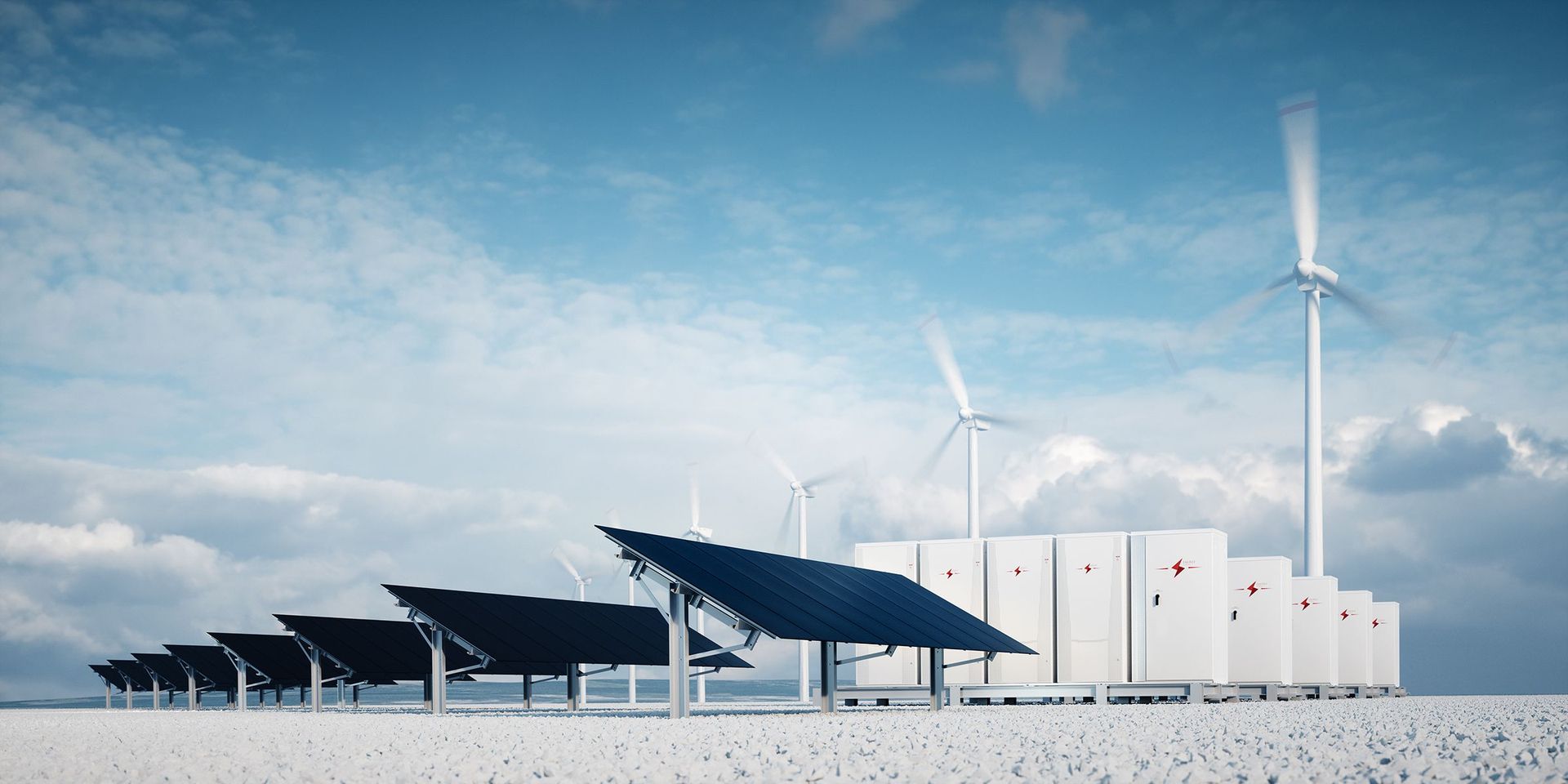The power of many
Next PortalReading time: 0 min
Renewable Energy Glossary
Welcome on the glossary page of the knowledge hub. Here you find an overview of common terms in the context of energy markets and virtual power plants.
Become part of the VPP
| Access point | The physical locations in the transmission and distribution grid where electricity can be taken off and/or injected. All access points of the Elia grid can be consulted here. |
| Aggregator | An aggregator is a BSP who combines several decentralized production and demand units in one portfolio. The aggregator can then operate the portfolio in a coordinated manner and deliver the same services as a large central power plant. This gives access to markets (reserve power and electricity markets) that cannot be entered by individual units of the portfolio. This way the portfolio can be traded on the relevant markets while furthermore system services can be offered to the TSO supporting overall grid operation and integration of renewables. |
| Ancillary services | Ancillary services are all actions of grid users that help grid operator Elia maintain the balance on the transmission grid. Most important ancillary services are reserve products (R1,R2,R3, R3DP etc), voltage regulation and black-start capability. |
| Area control error (ACE) | The net difference between real imports and exports in and out a control area, and the contracted imports and exports. |
| Balancing Responsible Party (BRP) | Each access point has to be assigned to the balancing group (also balancing perimeter) of a Balancing Responsible Party (BRP). The BRP is responsible for quarter-hourly balance between total injections and total offtakes (measurements at all assigned access points, trades on the power markets, cross-border import/export and power exchanges with other BRPs). |
| Balancing Service Provider (BSP) | A legal entity that offers the flexibility of a unit or load in the reserve market to parties that request flexibility services, like the TSOs or DSO. The BSP can but should not necessarily be the BRP to which the flexible installation is assigned to. |
| Clearing price | In power exchange markets, the market operator will aggregate all supply and demand bids to form the supply and demand curves. Consequently, they will clear the market. The intersection of supply and demand gives the price and size of the traded volumes, respectively known as the clearing price and clearing volumes. |
| Clearing volume | In power exchange markets, the market operator will aggregate all supply and demand bids to form the supply and demand curves. Consequently, they will clear the market. The intersection of supply and demand gives the price and size of the traded volumes, respectively known as the clearing price and clearing volumes. |
| Combined Cycle Gas Turbine (CCGT), Steam and Gas (STAG) | A gas turbine (i.e. a turbine that is driven by the exhaust gases of the combustion of some kind of fossil fuel) cycle that generates electricity, where the remaining heat is used to generate steam in a heat recovery heat exchanger. The steam is used to drive a steam turbine. The overall energetic efficiency of such a combined cycle can be as high as 60%. CCGTs are one of the most flexible conventional power plants, and are able to deliver fast reserve power products like R1 and R2. Due to the relatively high marginal costs, CCGTs take the role of a peak power plant in the normal electricity market. |
| Continious Intraday Market (CIM) | The power exchange market on the day of delivery of the energy commodity itselfTrading blocks of 1 hourcan be traded up to five minutes before actual delivery. In Belgium the CIM is organized by Belpex. |
| Control Area | A control area is the geographical area in which a TSO operates and has the final responsibility for the instantaneous balance between demand and supply |
| Day Ahead Market (DAM) | The power exchange market organized the day before actual delivery of the energy commodity. In Belgium the day-ahead market is run by Belpex. Demand and supply bids can be made until 12pm. The market will then be cleared, meaning that the clearing price and volumes are determined. Trading volumes are on hourly basis. |
| Distribution System Operator (DSO) | The DSO maintains, reinforces, expands and operates the distribution grid. The distribution grid brings the electricity from the transmission grid to end users down to household level. They are also responsible for public lighting, provide the green certificates to end-consumers with e.g. a solar photovoltaic installation and other tasks. In Belgium there are eight DSOs (Eandis, RESA, Infrax, ORES, Sibelga, AIEG, AIESH and REW). |
| Energiewende | The German energy transition (Energiewende) is a longterm energy and climate strategy towards a low-carbon energy system based on developing renewable energy and improving energy efficiency (source: Agora Energiewende 2015) |
| Futures markets | [In the context of energy] an exchange market where people can trade standardized futures contracts. This concerns volumes of energy to be delivered at a given point in the future, at the contracted price for a determined period. Both energy producers and consumers use futures contracts for risk hedging. |
| Imbalance | The difference between the amount of Energy that is required to be delivered to a Transmission Provider and the actual amount of Energy delivered to the Transmission Provider. Balancing Energy is used to compensate for this difference. |
| Imbalance tariffs | The mechanism grid operator Elia uses to incentivize BRPs to aim for keeping the balance at their balancing group. For each quarter of an hour an imbalance prices is determined taking into account the costs Elia has for activation of reserves to restore the balance of the system. |
| Inframarginal rent | The difference between the market clearing price and the marginal cost of certain generation unit is known as the inframarginal rent. Inframarginal rents are needed to recover fixed generation costs, like capital and overhead costs. |
| Marginal Decremental Price (MDP) | The price of the last activated downward regulation reserve bid in the merit order curve |
| Marginal Incremental Price (MIP) | The price of the last activated upward regulation reserve bid in the merit order curve used in the imbalance market |
| Market coupling | Integration of two or more national electricity markets, as long as there is sufficient transmission capacity available. This will lead to convergence of electricity prices. For example, the Belgian, Dutch, French, UK and German day-ahead markets are coupled since a few years and have shown convergence in price. Typically, implicit market coupling is meant. In this case, the cross border interconnection capacity needed for the physical transfer of energy is included in the auction. The national market platform directly integrates the available cross-border capacity in the market coupling algorithm. When there is explicit market coupling, interconnection capacity is auctioned seperatly. |
| Merit order curve | A curve that ranks the bids of different electricity generation technologies according to price and together with the volume of the bid. The price in theory reflects the marginal cost of generation, such as fuel costs, but not the capital or overhead costs. The intersection of the merit order curve and the demand curve will determine the clearing volume and price. |
| Net regulation volume (NRV) | The NRV is defined by Elia as follows (excerpt from Elia website). The instantaneous net regulation volume is equal to the difference between the gross upward regulation volume (sum of all upward regulation volumes for the whole control area) and the gross downward regulation volume (sum of all downward regulation volumes for the whole control area) in a given moment. The average NRV in a given quarter is the net of the overall activated downward and upward regulation volume in a given quarter. |
| Prosumer | [In the context of energy systems] prosumers are households or companies that both inject and take off electricity from the grid. They are consumer and producer at the same time. |
| R1 (also primary reserves or frequency containment reserves (FCR)) | Kicks in automatically in a matter of seconds after the deviation from the reference frequency (50Hz in Europe). Its aim is to contain the deviation to avoid system collapse. |
| R2 (secondary reserves or automatic frequency restoration reserves (aFRR) | These reserves are controlled centrally by Elia to restore the frequency back to its reference value. The reserves are active in a time frame of 30s to 15 min. |
| R3 (tertiary reserves or manual frequency restoration reserves (mFRR)) | The replacement reserves are meant to free up the R2 reserves after the frequency has been restored. They are controlled manually and activated locally. They are important to solve important imbalance and congestion problems, active in a time range from minutes to hours. R3 needs to be fully activated within 15 min. |
| R3 Dynamic Profile (R3DP), tertiary reserve power product | Relatively new reserve product that was introduced by Elia to allow in particular flexible demand processes to deliver reserve power. The demand response process can be connected to the transmission but also to the distribution grid. R3DP is solely activated upwards. The main product characteristics are that the product activations is strongly limited, the product cannot be activated for more than 2 hours and there has to be a significant break between two activations. |
| Regulator | Independent instance that monitors the natural monopoly of the grid operators. They guard the level-playing field in the energy market to assure free competition in production and supply. For example, the TSOs and DSOs have to apply the same tariffs for all producers and consumers who want access to the grid. |
| Residual demand | The demand of the consumers minus what is locally produced by wind, sun or other distributed generation |
| Retail market | [In the context of electricity] the market where suppliers compete to sell electricity to end-consumers. More specifically, they offer supply contracts. |
| Security of supply | The ability of the power system to provide electricity to end-users with a specified level of continuity and quality in as a sustainable manner (definition by Eurelectric). Typically, one distinguishes between short- and long-term security of supply. The former one is the ability to cope with sudden disturbances like short circuits or lightning strikes. The latter one is the ability of the system to meet the demand of the end-consumers at all time, taking into account possible outages of generation plants or grid infrastructure. |
| Transmission System Operator (TSO) | The operator of the high-voltage transmission grid. In Belgium this is Elia. The TSO maintains, reinforces and expands the high-voltage grid that transport large volumes of electricity over longer distances. The TSO is further the final responsible for secure grid operation and has to make sure that demand and generation are always in balance. Since they are natural monopoly, they operate under supervision of an independent regulator. In Belgium this is the CREG. |
| Virtual power plant | A virtual power plant is a pool of several decentralized small- and medium scale installations, either consuming or producing electricity. The combination of several types of flexible production and consumption units, controlled by a central intelligent system, allows to valorize the flexibility of the facilities at its best. |
| Wholesale market | [In the context of electricity] wholesale markets are the place where large producers, suppliers, traders and industrial consumers trade electricity. Suppliers will resell the electricity to small end-consumers on the retail market. |
More on the subject
More information and services
Disclaimer: Next Kraftwerke does not take any responsibility for the completeness, accuracy and actuality of the information provided. This article is for information purposes only and does not replace individual legal advice.


